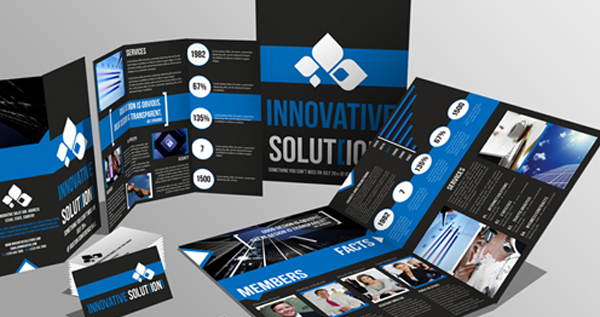Brochures & Flyers
Brochures & Flyers Designing and printing on Projects and products for business development.
Alwik - Tec is working on Brochures & Flyers Designing and printing on Projects and products for business development. And all the prototype is done accoding to our client requerment.
Brochures and flyers designing: impactful tools for business and promotion
Brochures and flyers are essential printed marketing materials that can effectively convey information, build brand awareness, and drive customer action. While they share the goal of informing and attracting customers, they differ in their format, purpose, and content depth.
Brochures: detailed information and lasting impressions
Brochures are typically folded documents, often with multiple panels, that provide comprehensive information about a company, product, or service. They are designed for a more in-depth exploration of the topic and are often kept for future reference.
Key aspects of brochure design
- Structure and Folds: Brochures come in various formats, such as bi-fold, tri-fold, and z-fold, each offering a distinct way to present information. The fold needs to be strategically chosen based on the amount and type of content to be included.
- Detailed Content: Brochures allow for more extensive text, including company history, product specifications, testimonials, and case studies. Use clear and concise language, avoiding jargon that might deter the target audience.
- Visual Appeal: High-quality images, graphics, and a well-designed layout are essential to keep the reader engaged and interested. Incorporating a strong visual hierarchy helps guide the reader's eye through the brochure.
- Professionalism: Brochures should have a polished and high-quality feel, often achieved through quality paper stock, vibrant colors, and professional finishing techniques like UV or aqueous coating.
- Clear Call to Action (CTA): A compelling CTA, such as "Call for a Free Quote" or "Visit Our Website to Learn More," is crucial for prompting the desired response from the reader.
Flyers: quick attention and broad distribution
Flyers are single sheets of paper, usually unfolded, designed for quick attention and wide distribution. They aim to capture immediate interest and provide a brief overview of an event, product, or service.
Key aspects of flyer design
- Concise Messaging: Flyers have limited space, so the message needs to be brief, clear, and impactful. Focus on a strong headline that immediately conveys the main message.
- Eye-catching Design: Use bold headlines, engaging graphics, and bright colors to grab attention and stand out from the crowd. High-resolution images are vital for a professional look.
- Targeted Audience: Tailor the design and message to resonate with the specific audience being targeted.
- Simple Layout: Ensure the information is easily readable and presented without visual clutter. Using bullet points can help in breaking down information.
- Clear Call to Action (CTA): Just like brochures, a strong and visible CTA is crucial for driving immediate action. DesignWiz says examples include "Visit Our Store Today" or "Scan to Sign Up".
Similarities and differences
- Shared Purpose: Both flyers and brochures are promotional materials used to advertise and inform potential customers.
- Design Tools: Popular design software like Canva and Adobe Express are suitable for creating both brochures and flyers, offering templates and easy-to-use editing features.
- Key Differences: The primary distinctions are the format (folded vs. single sheet), content depth (detailed vs. concise), purpose (in-depth exploration vs. quick attention), and distribution methods.
Choosing between flyers and brochures
The choice between a flyer and a brochure depends on the specific marketing goal, budget, and target audience.
- Choose flyers for: generating awareness, promoting limited-time offers, or inviting people to events. They are ideal for high-volume distribution in public areas.
- Choose brochures for: providing detailed information, securing sales, or building a strong brand image, especially for those already interested in the product or service. They are well-suited for trade shows, corporate meetings, or sales presentations.
In essence, whether it's a vibrant flyer grabbing attention or a comprehensive brochure providing in-depth details, both are powerful tools that can effectively spread your message and contribute to business success.
Call to ask any question
+91 7995 162 123









